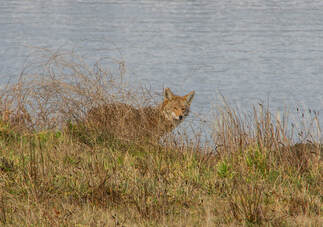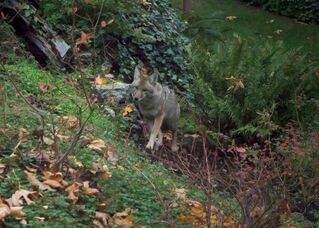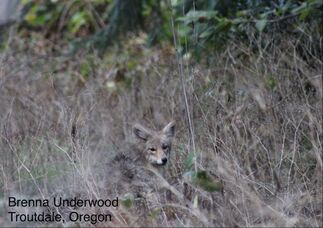About Coyotes
Habitat and Home Range
Coyotes make their home in a variety of habitats and will den in burrows, under downed trees, in thick brambles, and similar hidden places. Even in dense urban areas, coyotes are most commonly found in natural or undeveloped areas. Overall, coyotes tend to avoid areas frequented by humans.
Much of the research on urban coyote ecology comes from top coyote ecologist Stanley Gehrt and his team at the Urban Coyote Research Project. They study coyotes in the Chicago metro area, so we apply their findings to Portland’s coyotes with a grain of salt—our landscape, culture, and animals are different.
A coyote's home range includes the space a coyote uses regularly—where they hang out, hunt, and live. In Chicago, urban coyote home ranges are generally much smaller than rural home ranges. Urban home ranges are estimated at around 4.5 square miles. For reference, Milwaukie is about 5 square miles, Beaverton is about 20 square miles, and Portland is 145 square miles. Coyotes don't use their entire home range for hunting and living; populated areas in their home range are often avoided.
Read more about urban coyote home ranges and ecology.
Much of the research on urban coyote ecology comes from top coyote ecologist Stanley Gehrt and his team at the Urban Coyote Research Project. They study coyotes in the Chicago metro area, so we apply their findings to Portland’s coyotes with a grain of salt—our landscape, culture, and animals are different.
A coyote's home range includes the space a coyote uses regularly—where they hang out, hunt, and live. In Chicago, urban coyote home ranges are generally much smaller than rural home ranges. Urban home ranges are estimated at around 4.5 square miles. For reference, Milwaukie is about 5 square miles, Beaverton is about 20 square miles, and Portland is 145 square miles. Coyotes don't use their entire home range for hunting and living; populated areas in their home range are often avoided.
Read more about urban coyote home ranges and ecology.
Made possible by generous support from |




